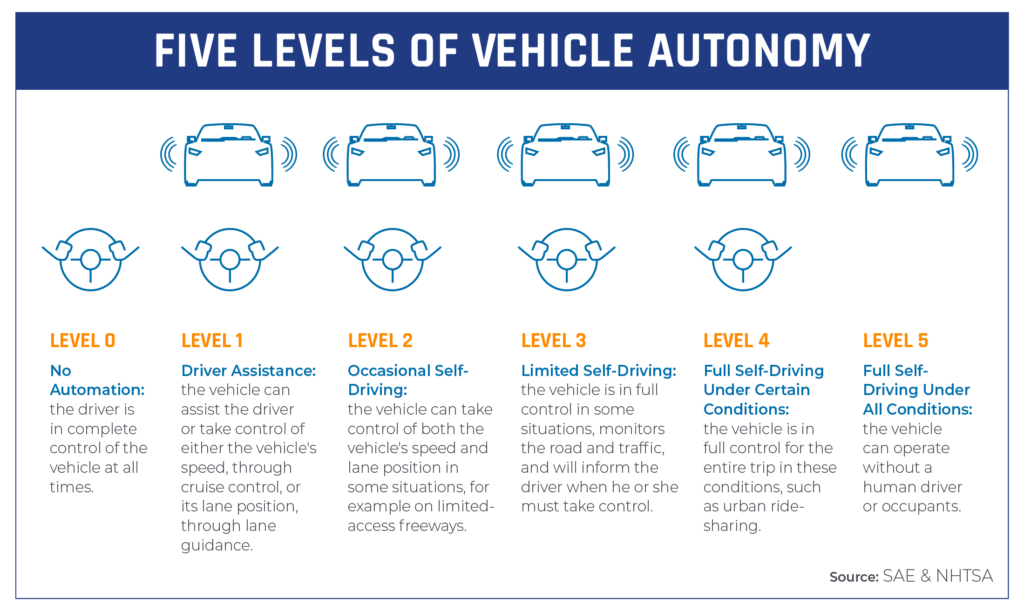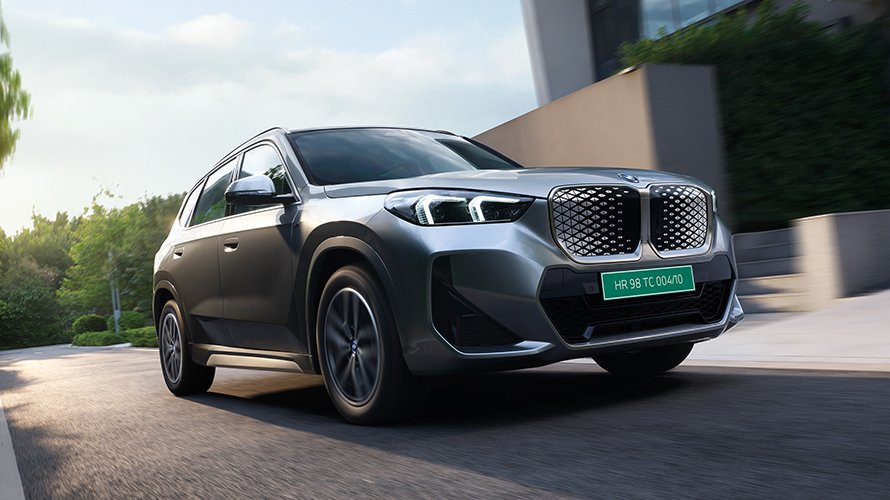India’s electric vehicle (EV) industry is accelerating at an unprecedented pace, driven by government incentives, growing environmental awareness, and advancements in battery technology. As Indian automakers like Tata Motors, Mahindra & Mahindra, and emerging players like Ola Electric carve out their space in the global EV market, the next logical frontier is Level 5 autonomous driving—the pinnacle of self-driving technology where vehicles operate without any human intervention. Embracing this challenge could position Indian EV manufacturers as global leaders in innovation, sustainability, and mobility. Here’s why Level 5 autonomy should be the new focus for Indian EV makers and how they can seize this opportunity.
The Case for Level 5 Autonomy in India
Level 5 autonomy, as defined by the Society of Automotive Engineers (SAE), represents fully autonomous vehicles capable of handling all driving tasks under all conditions, without requiring human input or even a steering wheel. For Indian EV manufacturers, pursuing this technology offers both strategic and practical advantages:
- Addressing India’s Unique Mobility Challenges: India’s roads are a complex mix of chaotic traffic, diverse road users (from pedestrians to livestock), and varying infrastructure quality. Level 5 autonomous systems, powered by advanced artificial intelligence (AI), machine learning (ML), and sensor fusion, can adapt to these unpredictable conditions more effectively than human drivers, potentially reducing accidents caused by human error, which accounts for over 70% of road fatalities in India, per the Ministry of Road Transport and Highways (2024 data).
- Global Competitiveness: The global autonomous vehicle (AV) market is projected to reach $2.5 trillion by 2030, according to a 2025 McKinsey report. Companies like Tesla, Waymo, and China’s BYD are heavily investing in Level 4 and Level 5 technologies. For Indian EV makers to compete globally, integrating full autonomy into their vehicles is essential to capture market share in both domestic and international markets.
- Synergy with Electrification: EVs and autonomous driving are a natural fit. EVs already rely on sophisticated electronics and software for battery management and powertrain control, which can be extended to support autonomous systems. Indian manufacturers can leverage their EV expertise to integrate advanced driver-assistance systems (ADAS) and eventually full autonomy, reducing development costs.
- Urban Mobility and Shared Economy: India’s rapidly urbanizing population and growing demand for shared mobility solutions (e.g., ride-hailing and car-sharing) make Level 5 autonomy a game-changer. Autonomous EVs could power cost-effective, eco-friendly urban transport networks, reducing congestion and pollution in cities like Delhi, Mumbai, and Bengaluru.
Challenges for Indian EV Makers
While the potential is immense, achieving Level 5 autonomy poses significant challenges for Indian manufacturers:
- Technological Complexity: Developing Level 5 systems requires expertise in AI, high-definition mapping, lidar, radar, cameras, and vehicle-to-everything (V2X) communication. Indian companies currently lag behind global leaders like Waymo, which has logged millions of autonomous miles. Building or acquiring this expertise will require substantial investment and partnerships.
- Regulatory Hurdles: India’s regulatory framework for autonomous vehicles is still nascent. The Motor Vehicles (Amendment) Act, 2019, does not explicitly address Level 5 autonomy, and creating a robust legal framework for testing and deployment will be critical. Collaboration with the government will be essential to establish safety standards and certification processes.
- Infrastructure Gaps: Autonomous vehicles rely on high-quality road infrastructure, reliable internet connectivity, and real-time traffic data. India’s uneven road conditions and patchy 5G coverage pose challenges for deploying Level 5 systems, particularly outside urban centers.
- Cost Barriers: The high cost of sensors, computing hardware, and software development could make Level 5 vehicles prohibitively expensive for India’s price-sensitive market. Indian manufacturers must innovate to create cost-effective solutions without compromising safety.
Opportunities for Indian EV Makers
Despite these challenges, Indian EV manufacturers are uniquely positioned to pursue Level 5 autonomy through strategic approaches:
- Leveraging India’s Tech Ecosystem: India’s thriving IT and AI sectors, with companies like Infosys, Wipro, and startups like Nauto and Swaayatt Robots, provide a rich talent pool and innovation ecosystem. Collaborations with tech firms can accelerate the development of affordable, India-specific autonomous solutions.
- Frugal Engineering: Indian automakers are renowned for their ability to innovate cost-effectively. By focusing on software-driven autonomy (e.g., vision-based systems over expensive lidar), companies like Tata and Mahindra can create scalable Level 5 solutions tailored for emerging markets.
- Government Support: Initiatives like the Faster Adoption and Manufacturing of Electric Vehicles (FAME) scheme and the National Mission on Transformative Mobility can be expanded to include incentives for autonomous vehicle R&D. Public-private partnerships could fund testing facilities and pilot programs.
- Global Partnerships: Indian manufacturers can collaborate with global AV leaders to gain access to cutting-edge technology. For instance, Tata’s partnership with Jaguar Land Rover could be leveraged to integrate autonomy into its EV lineup, while Ola Electric could explore tie-ups with firms like NVIDIA or Mobileye.
The Roadmap Ahead
To make Level 5 autonomy a reality, Indian EV makers should adopt a phased approach:
- Build on ADAS: Start by integrating Level 2+ and Level 3 ADAS features (e.g., adaptive cruise control, lane-keeping assist) into current EV models. This builds consumer trust and lays the groundwork for higher autonomy levels.
- Invest in R&D: Establish dedicated AV research centers, potentially in collaboration with institutions like IITs or global tech firms. Focus on developing AI models trained on India’s unique driving conditions.
- Pilot Programs: Launch autonomous EV pilot projects in controlled environments, such as smart cities (e.g., GIFT City, Gujarat) or industrial campuses, to test and refine Level 5 systems.
- Policy Advocacy: Work with the government to create a clear regulatory framework for AV testing and deployment, including liability rules and cybersecurity standards.
- Consumer Education: Address public skepticism about self-driving cars through awareness campaigns and transparent communication about safety benefits.
Leading the Charge
Indian EV makers have a unique opportunity to redefine mobility by pursuing Level 5 autonomous driving. Tata Motors, with its strong EV portfolio (Nexon EV, Tigor EV), could lead by integrating autonomy into its next-generation platforms. Mahindra, with its focus on sustainable mobility, could target autonomous SUVs for rural and urban markets. Ola Electric, with its tech-first approach, is well-positioned to disrupt the shared mobility space with autonomous electric cabs.
Conclusion
Level 5 autonomous driving is not just a technological leap but a transformative opportunity for Indian EV manufacturers to lead the global mobility revolution. By leveraging India’s tech talent, frugal innovation, and growing EV market, companies can overcome challenges and create affordable, safe, and scalable autonomous vehicles. As India aims to become a $5 trillion economy, Level 5 autonomy could be the catalyst that propels its EV industry to the forefront of global innovation. The road to full autonomy is long and complex, but for Indian EV makers, it’s a journey worth embarking on.



